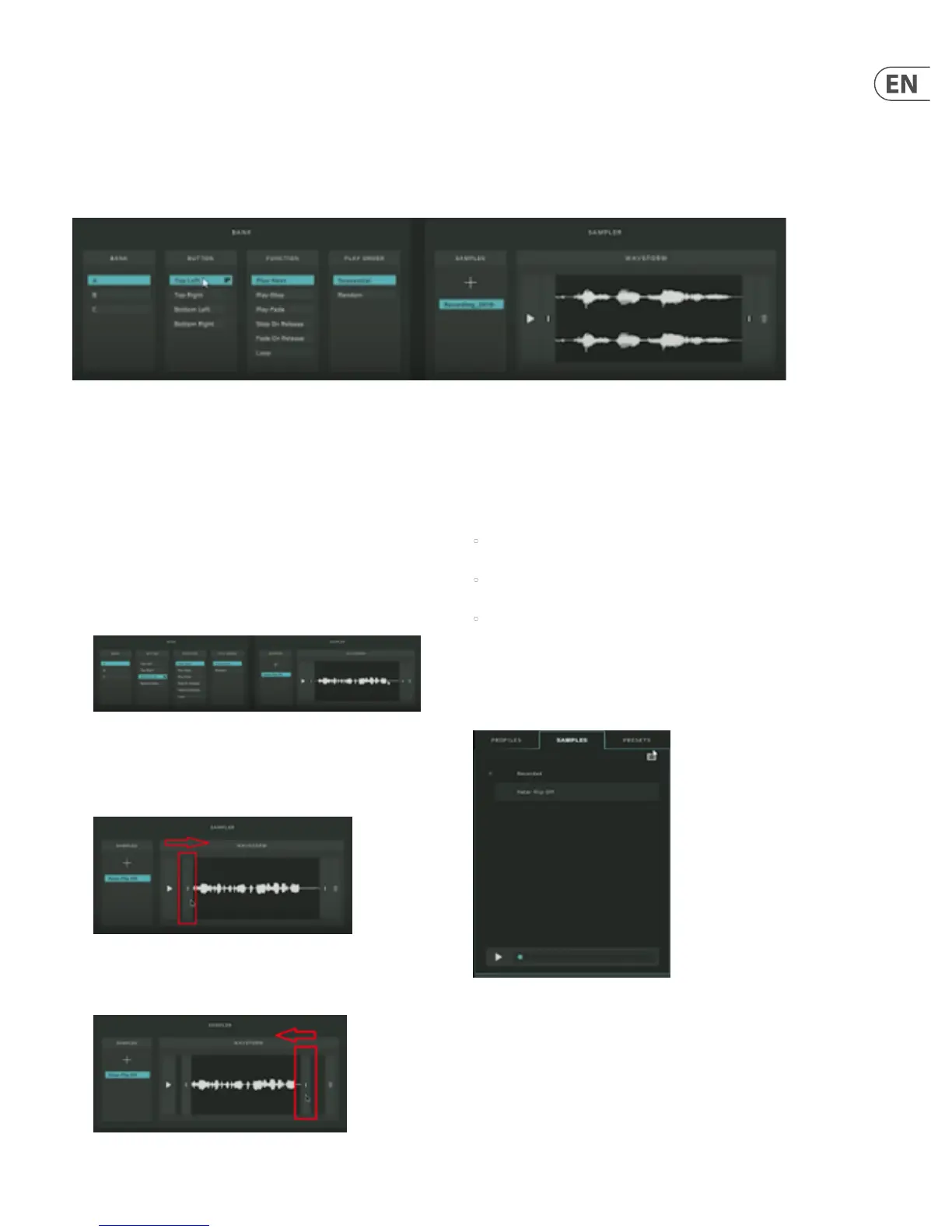23 GO XLR User Manual
10.2 Working with the Sampler Tab
The Sampler tab can be found in the Control Tabs section located in the bottom half of the GO XLR app window on your computer.
Within the Sampler tab, the Settings window shows controls for the sample banks on the left, along with playback options.
The Sampler section to the right shows the lename and waveform for the currently-selected Sample Pad, along with some basic editing tools so you can trim the
length of the sample as needed.
When you go to the Bank>Button section and click on any of the Sample Pads listed, the Waveform window will change to display the audio waveform for that
Sample Pad.
Sampler tab with sample waveform shown
NOTE: You can sample your voice through your vocal eects setup, so however your voice sounds in your headphones at that moment will be captured in the sample.
10.3 Editing a Sample
Once you have used a Sample Pad to capture a sample, you can then edit the
sample for length by using the editing bars on the left and right sides of the
waveform.
1. Sample some audio by pressing-and-holding one of the four Sample Pads.
2. Make sure this Sample Pad is selected under Bank>Button in the GO XLR app
so that the sample’s waveform appears in the Waveform window on
the right.
3. To edit the sample’s beginning, click on the left-hand editing bar
immediately to the left of the sample waveform.
4. Drag the editing bar rightward until you nd the right beginning point for
sample playback.
5. To edit the sample’s ending, click on the right-hand editing bar immediately
to the right of the sample waveform.
6. Drag the editing bar to the left until you like how the sample ends.
10.4 Color Indicators for Sample Pads
You can assign colors to the Sample Pads so that you can tell a Sample Pad’s
status at a glance, including the following conditions:
• active/loaded—the Sample Pad has a sample loaded and is playing back
(color is bright)
• inactive—the Sample Pad has a sample loaded, but is not playing back
(“active/loaded” color is dimmed)
• sample empty—no sample currently loaded to the Sample Pad (dimmed
color, which may be dierent from the “active/loaded” color)
10.5 Building a Sample Library
Your sample library can be built by going to the Samples tab in the upper left
corner of the GO XLR app screen.
Samples tab
